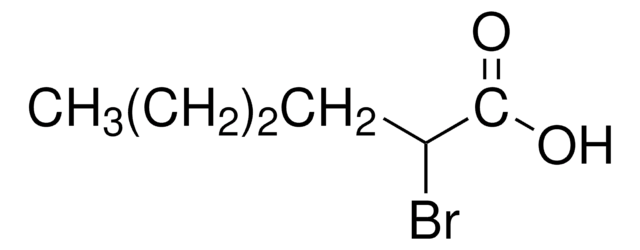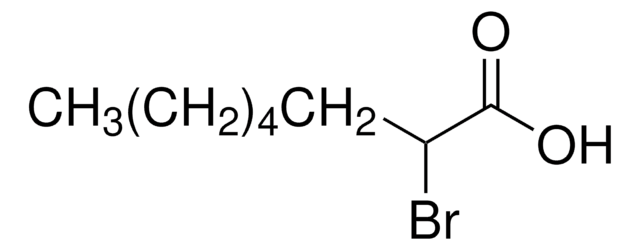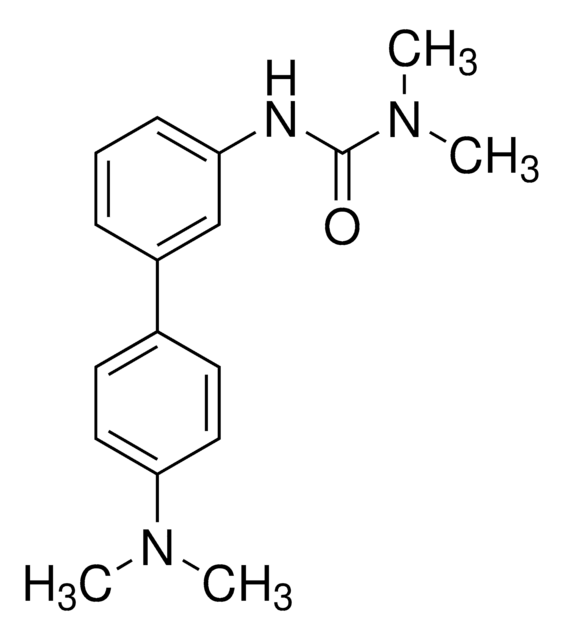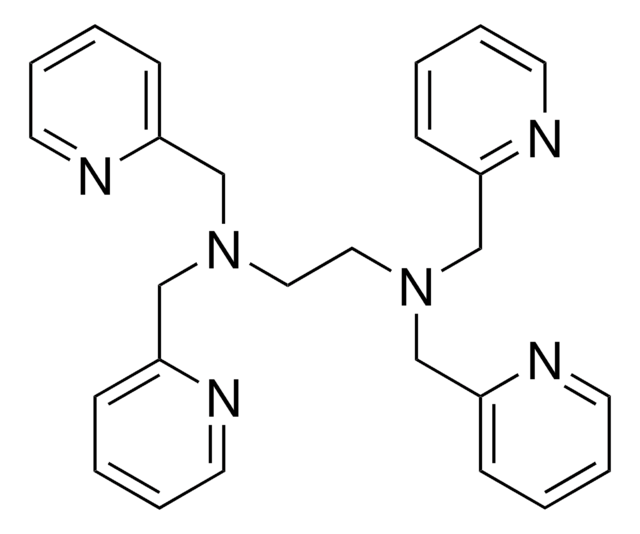238422
2-Bromohexadecanoic acid
~97%
Synonym(s):
2-Bromopalmitic acid
Sign Into View Organizational & Contract Pricing
All Photos(1)
About This Item
Linear Formula:
CH3(CH2)13CH(Br)CO2H
CAS Number:
Molecular Weight:
335.32
Beilstein:
1726517
EC Number:
MDL number:
UNSPSC Code:
12352203
PubChem Substance ID:
NACRES:
NA.77
Recommended Products
Assay
~97%
Quality Level
form
solid
SMILES string
CCCCCCCCCCCCCCC(Br)C(O)=O
InChI
1S/C16H31BrO2/c1-2-3-4-5-6-7-8-9-10-11-12-13-14-15(17)16(18)19/h15H,2-14H2,1H3,(H,18,19)
InChI key
DPRAYRYQQAXQPE-UHFFFAOYSA-N
Gene Information
human ... PPARD(5467)
Looking for similar products? Visit Product Comparison Guide
General description
PPARδ (peroxisome proliferator-activated receptor, delta isoform) acts as a transcription factor for gene expression as well as playing a role in lipid metabolism regulation; activity of this receptor is ligand-regulated. 2-Bromohexadecanoic acid is a metabolically stable analoge of the fatty acid palmitic acid that has been shown to be a natural ligand for the PPARδ receptor. 2-Bromohexadecanoic acid has also been used in studies of fatty acid oxidation, palmitoylation, and glucose uptake.
Biochem/physiol Actions
2-Bromohexadecanoic acid is a PPARδ agonist. It has also been shown to inhibit fatty acid oxidation, inhibit DHHC-mediated palmitoylation, and promote glucose uptake in rat cardiac cells and the insulin-sensitive murine fibroblast line A31-IS.
Storage Class Code
11 - Combustible Solids
WGK
WGK 3
Flash Point(F)
235.4 °F - closed cup
Flash Point(C)
113 °C - closed cup
Personal Protective Equipment
dust mask type N95 (US), Eyeshields, Gloves
Choose from one of the most recent versions:
Already Own This Product?
Find documentation for the products that you have recently purchased in the Document Library.
Customers Also Viewed
Joel Berger et al.
Annual review of medicine, 53, 409-435 (2002-01-31)
The peroxisome proliferator-activated receptors (PPARs) are a group of three nuclear receptor isoforms, PPAR gamma, PPAR alpha, and PPAR delta, encoded by different genes. PPARs are ligand-regulated transcription factors that control gene expression by binding to specific response elements (PPREs)
Abiy M Mohammed et al.
Biochemical pharmacology, 85(1), 109-114 (2012-10-25)
Phagocyte-like NADPH oxidase (Nox2) has been shown to play regulatory roles in the metabolic dysfunction of the islet β-cell under the duress of glucolipotoxic conditions and exposure to proinflammatory cytokines. However, the precise mechanisms underlying Nox2 activation by these stimuli
Aaron C Baldwin et al.
American journal of physiology. Endocrinology and metabolism, 302(11), E1390-E1398 (2012-03-23)
Exposure of insulin-producing cells to elevated levels of the free fatty acid (FFA) palmitate results in the loss of β-cell function and induction of apoptosis. The induction of endoplasmic reticulum (ER) stress is one mechanism proposed to be responsible for
Kenji Hayata et al.
Journal of pharmacological sciences, 108(3), 348-354 (2008-11-15)
To obtain compounds that promote glucose uptake in muscle cells, the novel cell lines A31-IS derived from Balb/c 3T3 A31 and C2C12-IS from mouse myoblast C2C12 were established. In both cell lines, glucose consumption was induced by insulin and suppressed
Benjamin C Jennings et al.
Journal of lipid research, 50(2), 233-242 (2008-10-02)
Pharmacologic approaches to studying palmitoylation are limited by the lack of specific inhibitors. Recently, screens have revealed five chemical classes of small molecules that inhibit cellular processes associated with palmitoylation (Ducker, C. E., L. K. Griffel, R. A. Smith, S.
Our team of scientists has experience in all areas of research including Life Science, Material Science, Chemical Synthesis, Chromatography, Analytical and many others.
Contact Technical Service















